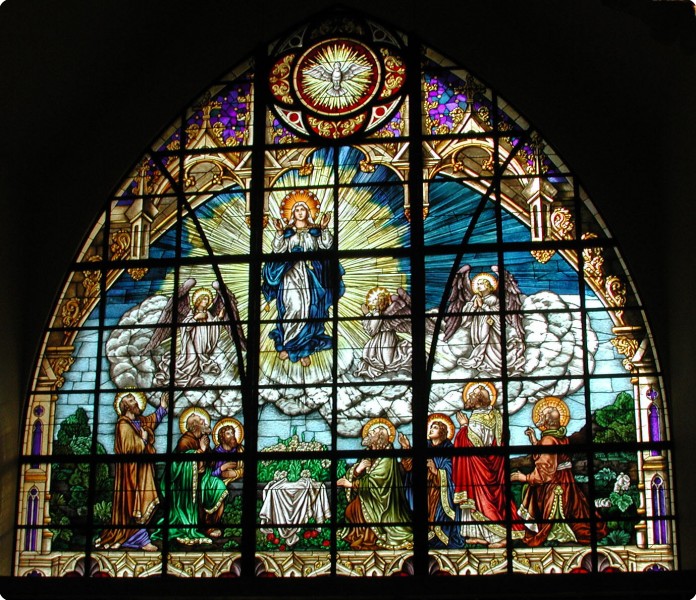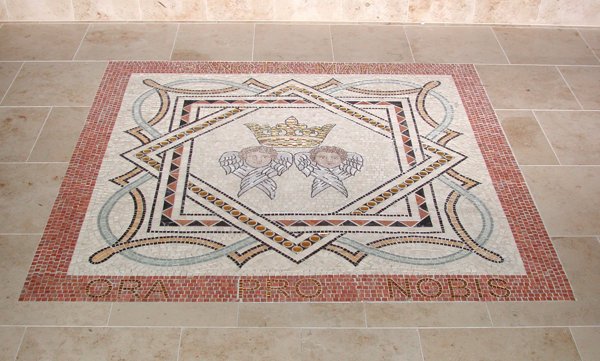- Details
- Category: Products
Heritage Restoration and Design has many years of experience in the manufacturing stained glass windows. We design glass not only to match many historic styles, but also to flow with interior design schemes of existing or new buildings. When it comes to leaded and stained glass designs, there are virtually limitless options.
Designing
Stained and leaded glass windows are a very descriptive art form. They can be used to tell generational stories, highlight architectural elements, add vibrant color to their surroundings as a unique design element.
Conceptualizing stained glass is a very artistic process that is conducted hand-in-hand with our clients. We will work with you to develop a design that encompasses your intended vision.

Three main thought processes, either individually or combined, are employed when conceptualizing a glass project.
The first process is the addition of a noticeable design element into a space that will compliment its surroundings. For instance, stained glass over a door entrance.
The second is the inclusion of color into a space. Nothing compares to natural light transmitting through colored glass. A good example would be a waiting room that is otherwise very bland or and ‘institutional’ could receive a wholesome splash of color through a window.
And finally, the third process is the desire to tell a story with windows or panels. Common examples of this concept can be found in houses of worship and courthouses. Churches often tell a story by using a series of windows to, for instance, describe the Life of Christ. By comparison, courthouses may have a ceiling dome with rich colored geometric patterns, or depict Lady Justice holding her scales.
By no means do either of these thought processes have to be used individually. Combining an architectural space with color, while at the same time telling a story, is seen in the most descriptive windows in the world. Resurrection Church in Leawood, Kansas, the Cathedral Basilica in Lexington, Kentucky, the cemetery mausoleum in Justice, Illinois, any of the major cathedrals in Europe, and even in the Al Faisaliah Centre, Riyadh, Saudi Arabia are great examples of large windows full of design and color that tell great stories.
General Process for New Window Creation
- Conceptualizing With the Client
- Preliminary Designs and Sketches for the Color, Texture, Shape and Content
- Full Color Representations for Each Unit
- Client Approval
- Manufacturing of the Windows
- Shipping and Installation at Client's Location
New window manufacturing is a lengthy process. These beautiful works of art require many hours to design. Sometimes it is feasible for a client to purchase a full set of panels or windows, complete with installation. Other times, the client may want to divide the project into phases, spreading the cost over several years. Heritage Restoration and Design will work with our client's specific needs and budgets.
- Styles
- Geometric
- Florals
- Scenic
- Religious
- Light Capturing
- Traditional
- Gothic
- Roman
- Beveled
- Etc...
- Designs
- Church and Chapel
- Transom Panels
- Doors and Sidelights
- Tiffany Lamps
- Suspended Ceilings
- Ceiling Domes
- Backlit Units
- Cabinet Doors
- Furniture
- Restraunt and Pub
- Etc...
- Client Locations
- Churches
- Atriums
- Restraunts
- Courthouses
- Homes
- Retail Storefronts
- Education Facilities
- Healthcare
- Corporate Offices
- Museums
- Libraries
- Hospitality
- Etc...
- Details
- Category: Products
Creating Mosaic

Mosaic works have long been a part of traditional architecture. The earliest discovered mosaic imagery dates back to Mesopotamia over five thousand years ago. In the millennia that followed, the art form spread into the Greco-Roman world. During the fourth century AD, Christians began to decorate church interiors with mosaics on the walls and ceilings. This style of expression thrived in the Byzantine empire, and spread into its territorial holdings such as famous the Basilica of San Vitale in Revenna, Italy.
Mosaic master craftsmanship has been passed down through the ages, combining a wealth of knowledge from past generations with the technological advances of today. However, mosaic work is still often done in the traditional manner of one piece at a time. Heritage Restoration and Design Studio, now in its sixth generation, is dedicated to the designing and manufacturing of traditional style mosaic floors and wall panels. Our employees are skilled craftsmen in the conceptual designing, manufacturing and installation of new mosaic works.
Materials
Mosaic is an art form which uses small pieces of materials placed together to create a unified whole. Mosaics are typically made using natural materials such as polished and unpolished marbles, split or smooth stone, cut or polished granite, and special solid semi-transparent or translucent vetro. Glass pieces can be finished with gold leaf, a process popular in many churches. Some of the best quality mosaic work uses the various surface finishes to help create a three-dimensional look. This technique offers depth as part of the final work.
Heritage offers a wide variety of mosaic art styles and designs.
Styles
- Geometric
- Florals
- Scenic
- Religious
- Decorative Patterns
- Medallions
- Borders
Designs
- Church/Chapel Walls and Ceilings
- Narthex/Foyer
- Floors
- Ceiling
- Domes
- Projects
- Floor Border
- Outlining
Have Questions?
Give us a call
PH: 309-637-5404
Heritage is open 8 A.M. to 4 P.M. CST. If you are calling when we are not open, leave us a message and we will get back to you with in 24 hours.
Send us an email
If you have large files to send ask for a link to our private cloud service to securely send your files. We believe in data security.




Let's Connect